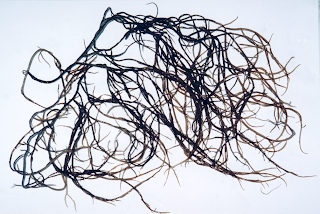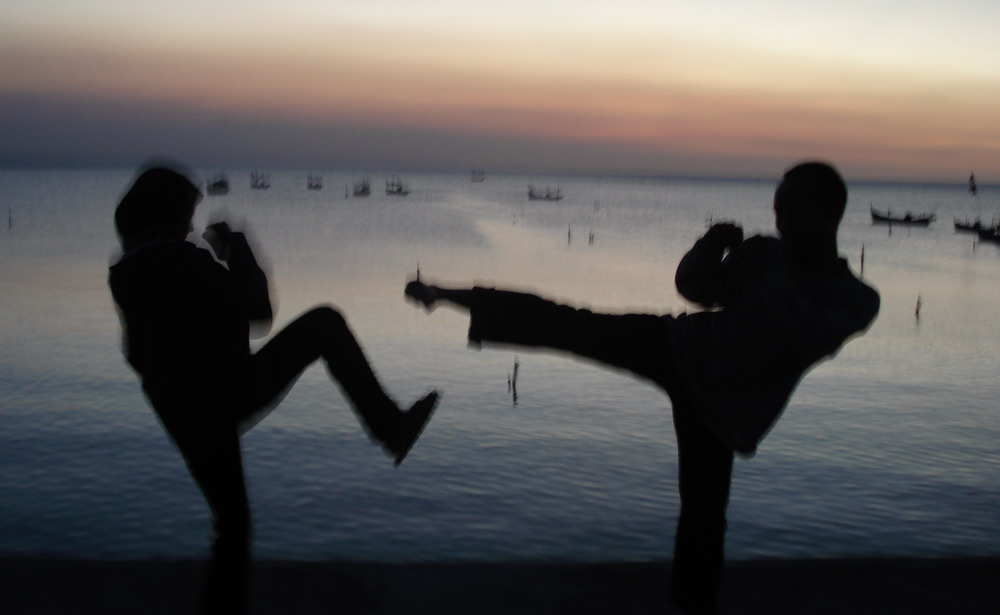Aquaculture Fisheries Development : Seaweed or Marine Algae was low level plants of Divisio Thallopyta. Euchema sp, Gracilaria sp,Gelidium sp, Hypnea sp and Sargassum sp were type of Indonesia seaweed that economically and have traded long ago, either to be consumed domestically and exported.
Most of the seaweed in Indonesia was still exported from the form of dried seaweed. On the other hand, Indonesia still imports of processed seaweed for industrial purposes.
Given the huge market potential and the potential of large ponds also, the development of seaweed farming in ponds has good prospects.
Gracilaria verucossa was commonly seaweed that cultivated in ponds, was widely used for the manufacture of gelatin (jelly)
Development of cultivation technologies suggest that seaweed can be cultivated with shrimp and milk fish in ponds. Poly culture farming systems are based on the principles of natural balance, may improve the efficiency of land use and income of farmers on an ongoing basis.
On seaweed culture with poly culture in ponds, aquatic ecology and pond construction is a factor that greatly affects the growth of seaweed. Some terms of seaweed farms for the cultivation of Gracilaria sp in poly culture with shrimp and milk fish were:
Ponds form ideal:
Spreading the seeds; used traditional broadcast method, where the seed was spread throughout the pond. For further planting of seedlings could be taken from some of the crop. Comparison stocking seaweed, milk fish and shrimp, in planting a poly culture in ponds, was :
Post-harvest, drying seaweed is done by putting seaweed on top net. Shrinkage of wet seaweed to dry after drying are:
10: 1, which means a ton of wet seaweed harvest into one hundred pounds of dried seaweed.
Most of the seaweed in Indonesia was still exported from the form of dried seaweed. On the other hand, Indonesia still imports of processed seaweed for industrial purposes.
Given the huge market potential and the potential of large ponds also, the development of seaweed farming in ponds has good prospects.
 |
| Picture of Gracilaria verrucossa |
Gracilaria verucossa was commonly seaweed that cultivated in ponds, was widely used for the manufacture of gelatin (jelly)
Development of cultivation technologies suggest that seaweed can be cultivated with shrimp and milk fish in ponds. Poly culture farming systems are based on the principles of natural balance, may improve the efficiency of land use and income of farmers on an ongoing basis.
On seaweed culture with poly culture in ponds, aquatic ecology and pond construction is a factor that greatly affects the growth of seaweed. Some terms of seaweed farms for the cultivation of Gracilaria sp in poly culture with shrimp and milk fish were:
- pond location close to the beach
- availability of fresh water to reduce salinity
- wind sheltered areas
- Tidal differences are sufficient to facilitate the turn of the pond water
- bottom consists of sand and mud
- turnover made 30% sea water (at least 2 weeks) and preferably by using a system of gravity or the tides
No
|
Water Parameter
|
Optimal Range
|
1
|
Water Temperature (°C)
|
20 – 28
|
2
|
Salinity (ppt)
|
15 – 32
|
3
|
pH
|
6,8 – 8,2
|
4
|
Dissolved Oxygen(ppm)
|
3 – 8
|
5
|
Brightness
|
Not turbid and allows
receiving sunlight
|
6
|
Pollutions
|
Far from industrial waste water or industrial waste
land
|
Ponds form ideal:
- wide range from 1 ha plot, rectangular
- muddy pond bottom and slightly sandy soil
- sluice gates, which serve as entry doors and disposal doors
- water depth of 50-100 cm, the contours of the sloping land of 5-10 cm
 |
| Spreading seaweed at pond |
Seaweed
|
Milk Fish
|
Tiger Shrimp
|
1 - 1,5 ton
|
1.500
|
5.000
|
 |
| Drying seaweed and farmer pose ;) |
Post-harvest, drying seaweed is done by putting seaweed on top net. Shrinkage of wet seaweed to dry after drying are:
10: 1, which means a ton of wet seaweed harvest into one hundred pounds of dried seaweed.









0 komentar:
Post a Comment